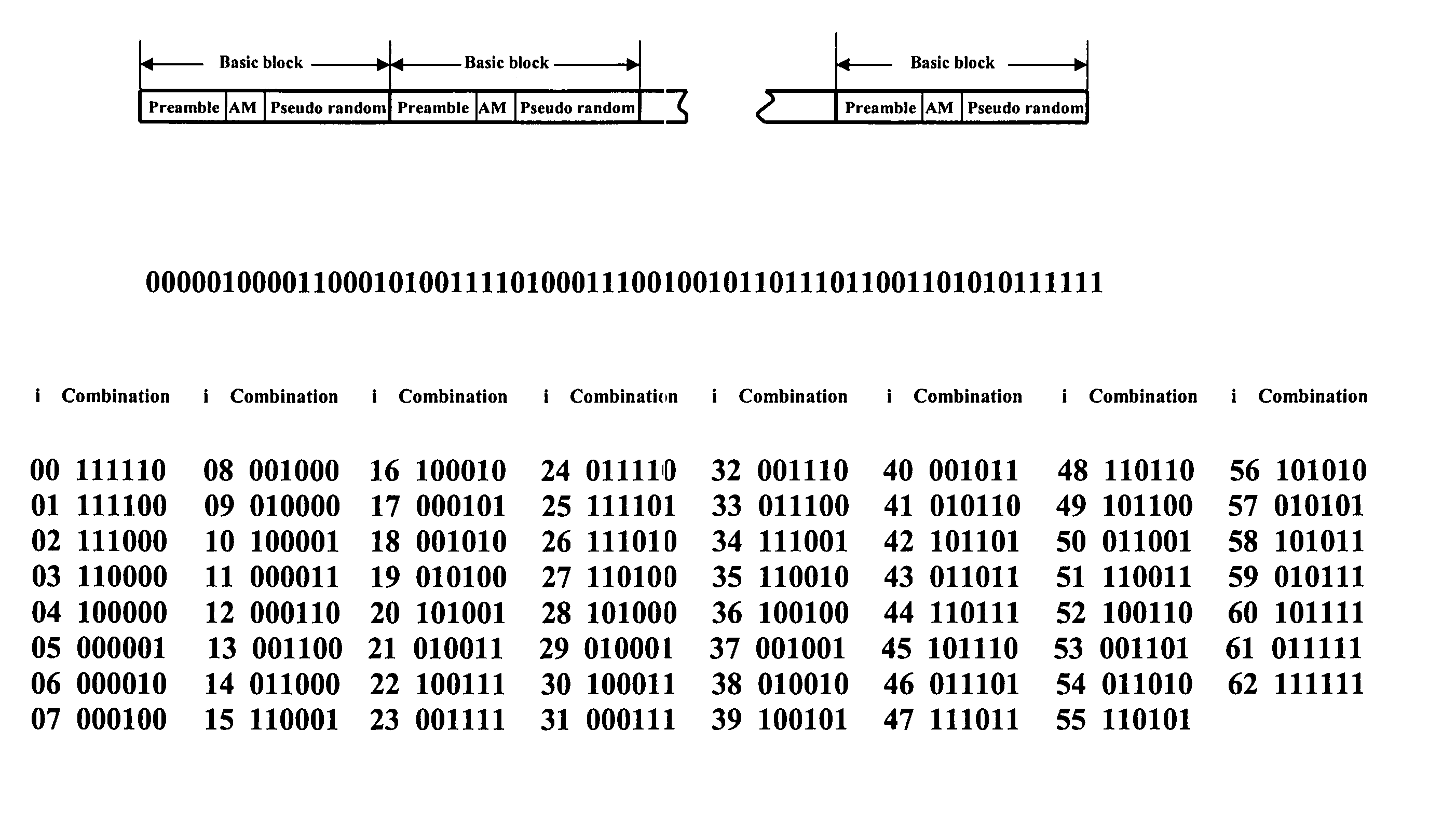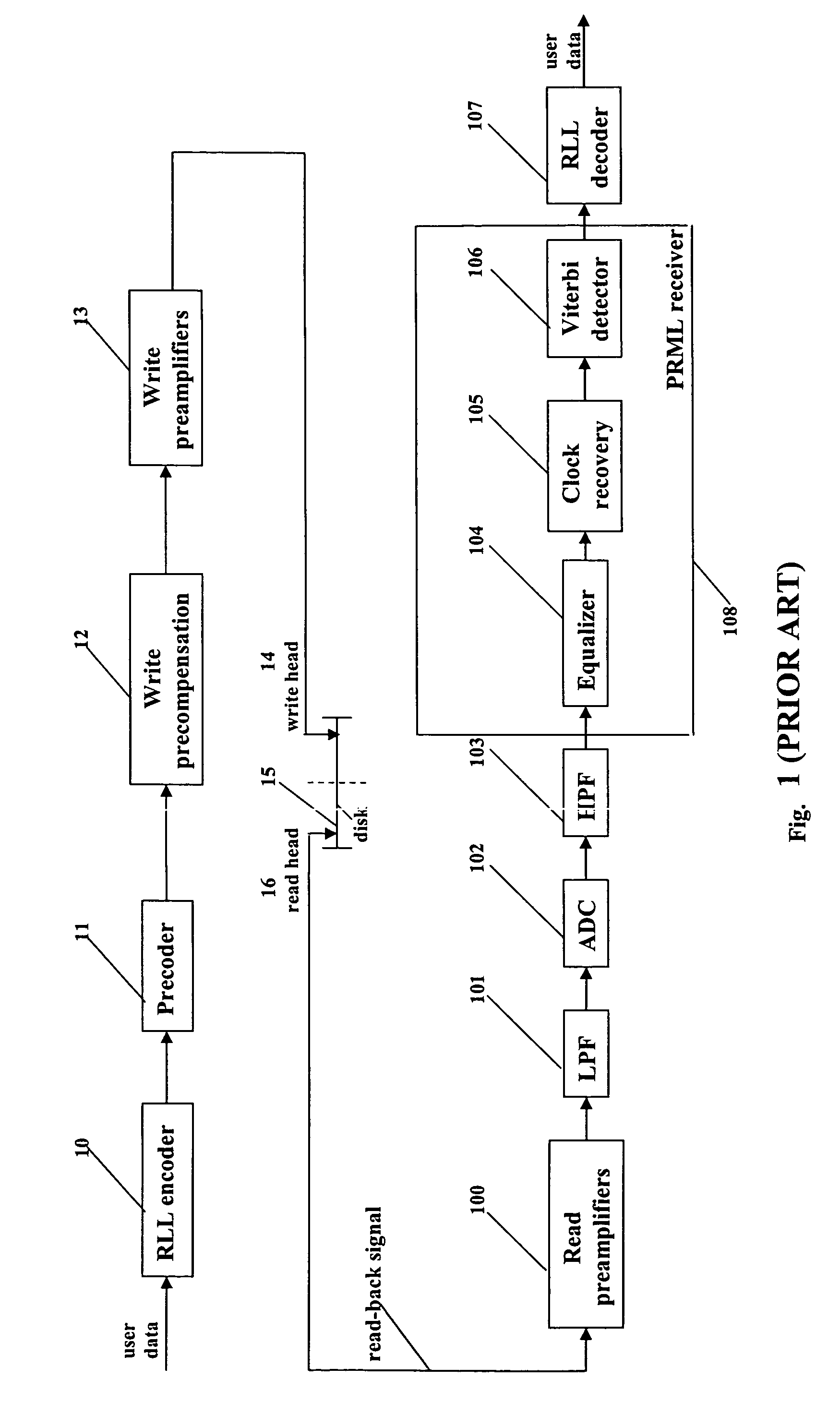Self-adjusting PRML receiver
a receiver and self-adjusting technology, applied in the field of digital signal detection, can solve the problems of increased noise, nonlinear distortion and noise, decreased distance between adjacent magnetization transitions,
- Summary
- Abstract
- Description
- Claims
- Application Information
AI Technical Summary
Problems solved by technology
Method used
Image
Examples
Embodiment Construction
[0026]A self-adjusting PRML receiver according to the present invention can operate in one of two modes: a training mode or a detection mode. In the training mode, the self-adjusting PRML receiver reads a special test pattern that was written to a magnetic disk beforehand. The test pattern contains a number of preambles that are evenly distributed along the pattern length. Between the preambles, a special sequence of bits is repeated periodically. This special sequence comprises all possible nonzero binary combinations of a given length L; the position in the sequence where a certain combination appears, is known in advance. The self-adjusting PRML receiver carries out the operation of clock recovery by building a set of read-back signal samples in correct timing positions with exactly one sample per each test pattern bit. Preambles that occur often enough, enable the self-adjusting PRML receiver to maintain the correct phase of the samples despite possible disk rotation speed fluct...
PUM
| Property | Measurement | Unit |
|---|---|---|
| length | aaaaa | aaaaa |
| clock frequency | aaaaa | aaaaa |
| rotational speed | aaaaa | aaaaa |
Abstract
Description
Claims
Application Information
 Login to View More
Login to View More - R&D
- Intellectual Property
- Life Sciences
- Materials
- Tech Scout
- Unparalleled Data Quality
- Higher Quality Content
- 60% Fewer Hallucinations
Browse by: Latest US Patents, China's latest patents, Technical Efficacy Thesaurus, Application Domain, Technology Topic, Popular Technical Reports.
© 2025 PatSnap. All rights reserved.Legal|Privacy policy|Modern Slavery Act Transparency Statement|Sitemap|About US| Contact US: help@patsnap.com



